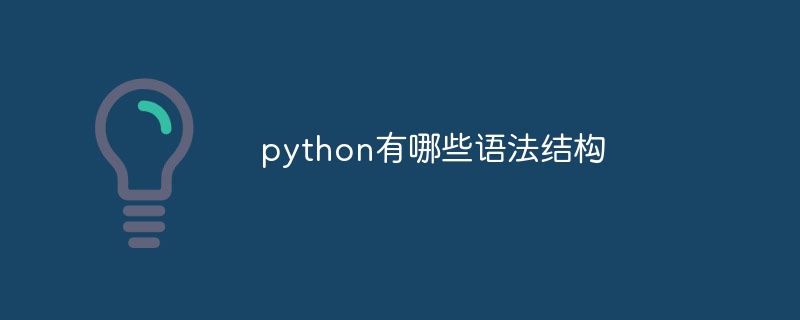
Python has a clear syntax structure, based on assignment statements, control flow structures, functions, classes and modules: assignment statement: variable name = value control flow: if, for, while, break, continue function: def function Name (parameter): function body class: class class name: class attribute, method module: import module name as alias

Python syntax structure
Python is an easy-to-learn and powerful programming language with a clear and concise syntax structure. The following is a list of the most common syntax structures in Python:
1. Assignment statement
The assignment statement is used to store a value into a variable. The syntax is:
<code>变量名 = 值</code>
2. Control flow
The control flow structure determines the order in which the code is executed. The following are some common control flow structures:
<code>if 条件:
代码块 1
else:
代码块 2</code><code>for 变量名 in 序列:
代码块</code><code>while 条件:
代码块</code><code>break</code>
<code>continue</code>
3. Function
Function is used to group code and achieve reusability. The syntax is:
<code>def 函数名(参数):
函数体</code>4. Class
Class is used to create custom objects and types. The syntax is:
<code>class 类名:
类属性
方法
</code>5. Module
Modules are used to organize code and achieve code reuse. The syntax is:
<code>导入 模块名 as 别名</code>
These are the most common syntax structures in Python. By understanding and applying these constructs, developers can write Python code that is clear, maintainable, and efficient.
The above is the detailed content of What are the grammatical structures of python?. For more information, please follow other related articles on the PHP Chinese website!




